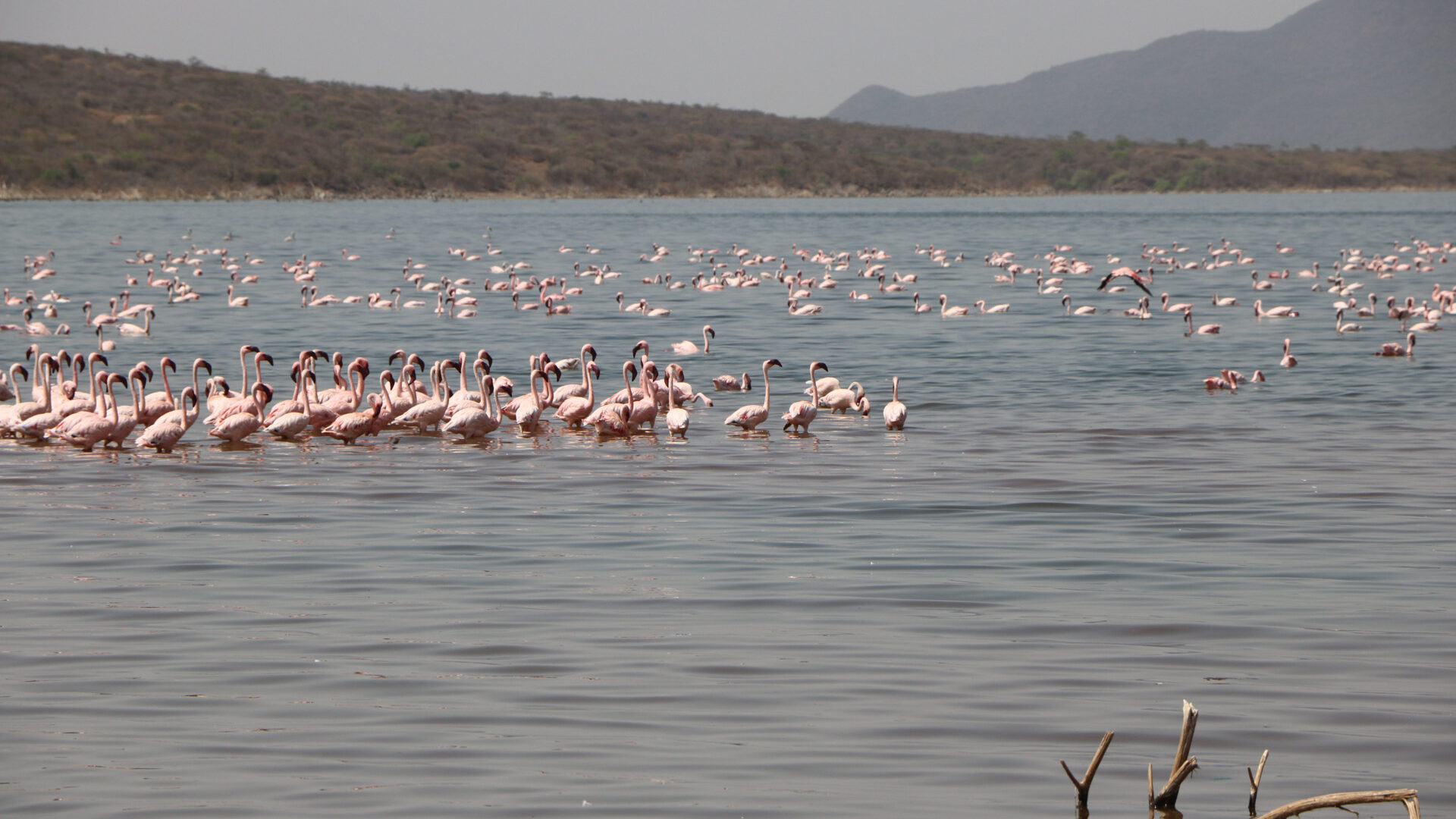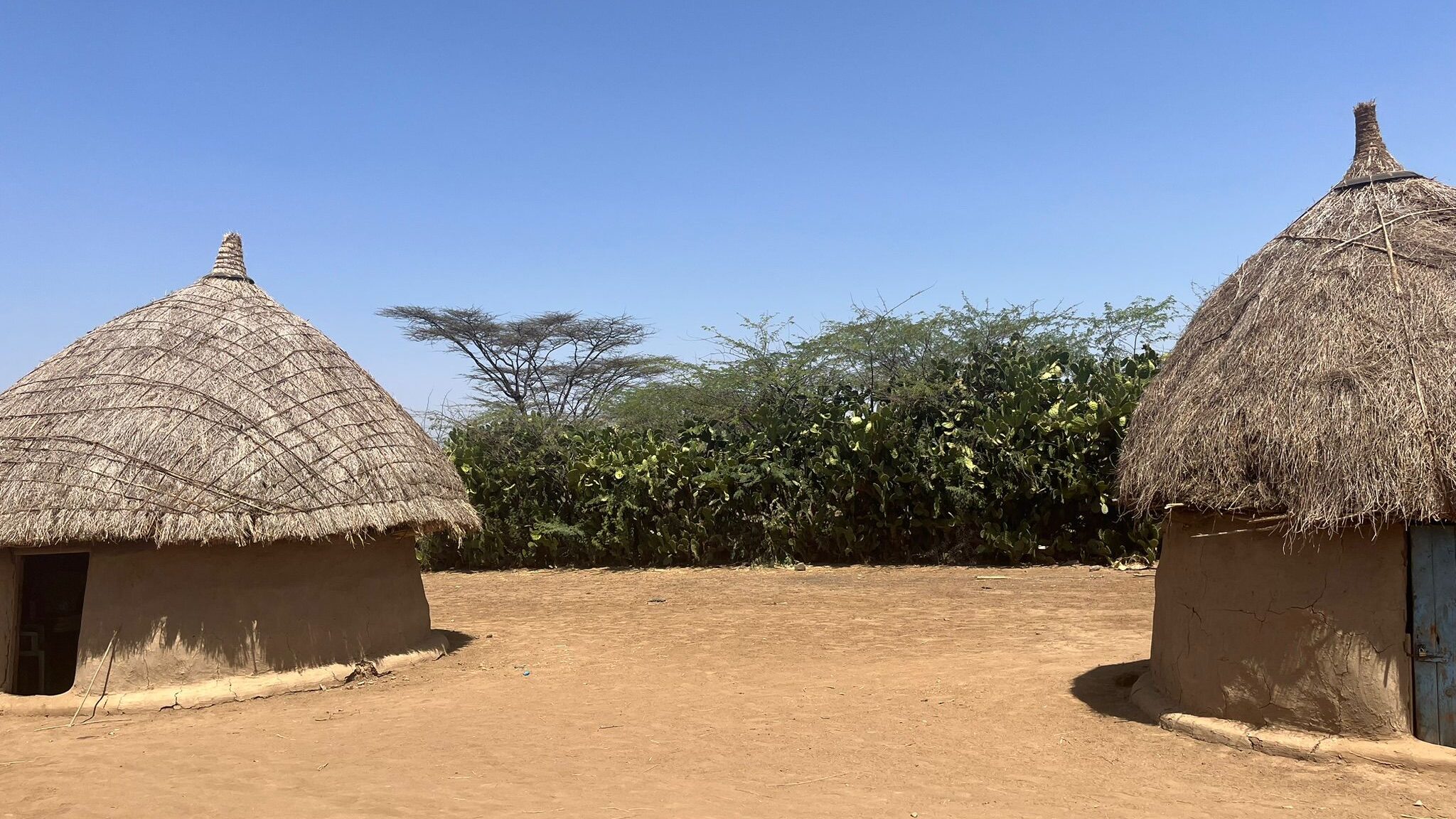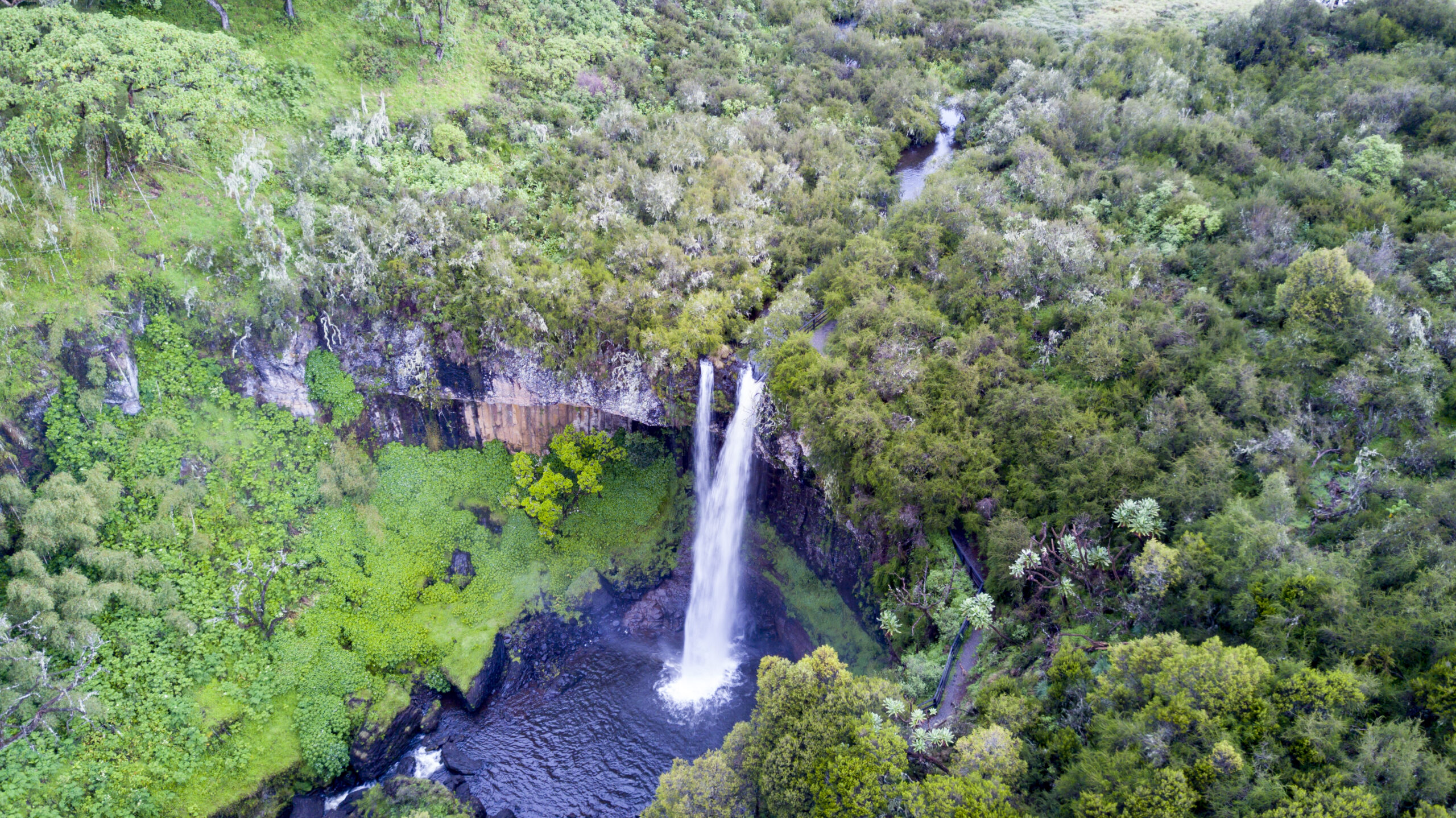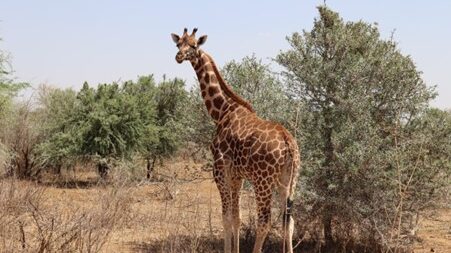Exploring Kenya’s Wonders: A Geography Field Investigation Experience
September 22, 2023
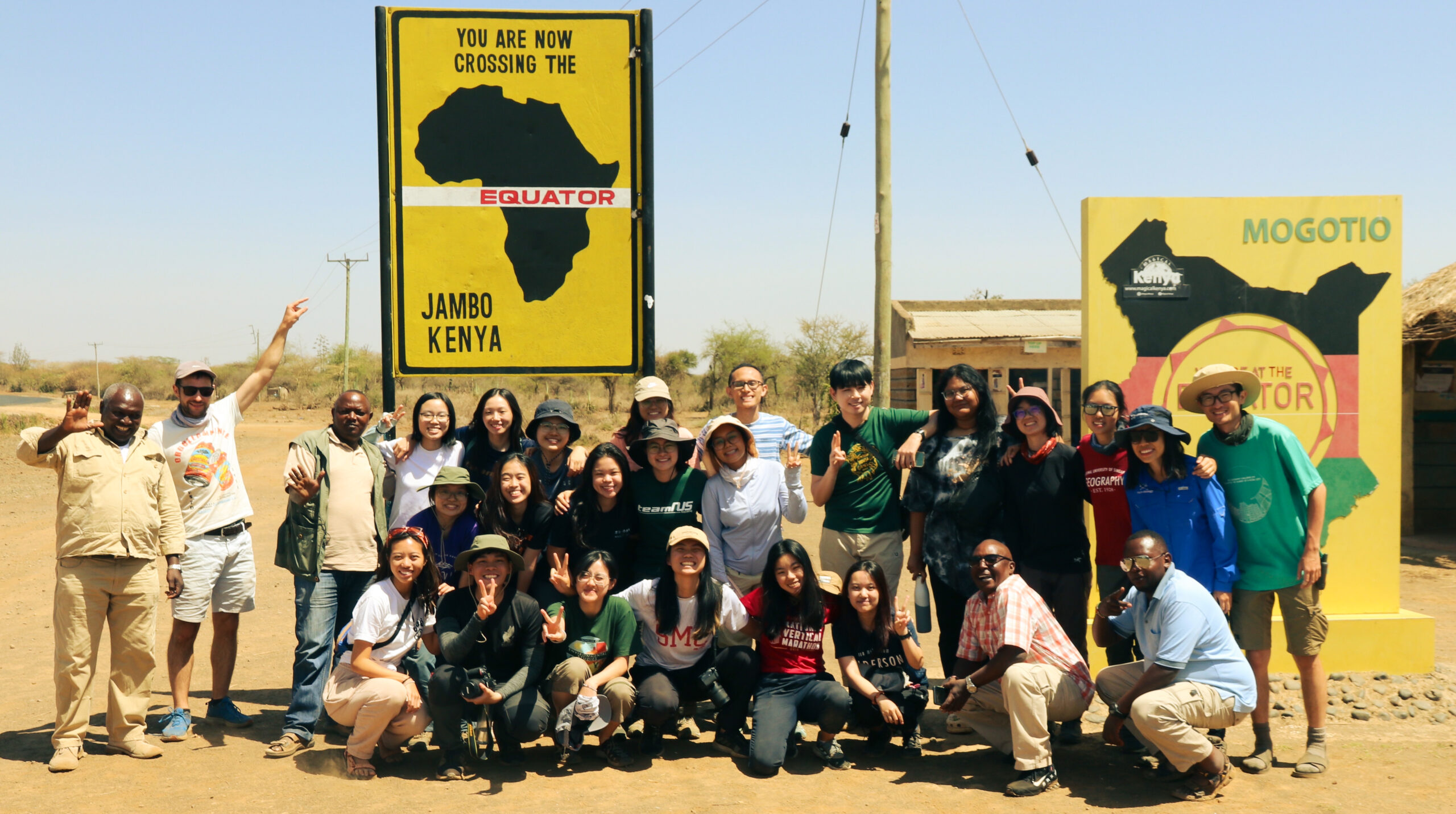 The group of students, teaching assistants and drivers at the equator crossing at Mogotio during Field Investigation.
The group of students, teaching assistants and drivers at the equator crossing at Mogotio during Field Investigation.
Like most other overseas field courses, GE4220 Field Investigation (FI) in Physical Geography has ushered in a new batch of bright-eyed students after the lifting of Covid-19 travel restrictions. From 17 February to 28 February 2023, Professor David Taylor, Head of the Department of Geography, led 20 Geography major and Bachelor of Environmental Studies students on an extraordinary fieldwork and research expedition through the Great Rift Valley, Kenya. Join us as recent graduates Ronnie Lai, Ophelia Ong, and Yeo Min En share their exhilarating experiences from this unforgettable journey.
The Thrill of Unique Landscapes
For many students, the reopening of FI was extremely exciting, especially after the disruptions caused by the pandemic. Ronnie shared his excitement, stating, "Covid-19 unfortunately derailed my overseas exchange program, but when I saw FI was being offered again, I didn't hesitate to sign up. I knew it would be an enriching experience."
Min En, equally enthralled, saw this as a chance to explore a vastly different environment. She said, "The opportunity to study a destination I had limited knowledge of was rare and exciting. I couldn't wait to witness firsthand the physical formations I'd only read about in textbooks and case studies."
Ophelia too was captivated by Africa's natural wonders. "Africa is the only continent with a great biodiversity of large mammals," she shared. "It's also a unique geological location with glaciated mountains, montane rainforests, and savannahs." Their anticipation was palpable, and Kenya would prove to be as magical as they had imagined.
Living with Nature
The experience of living harmoniously with nature holds immense importance today, particularly in Singapore, as we strive to become a "City in Nature." Min En emphasized her biggest takeaway from FI – the opportunity to live in harmony with nature. "At the Ol Pejeta Conservancy, our tents were adjacent to natural habitats visited by buffaloes, hippos, elephants, and even leopards," she recalled. "To minimize disruption to the land, we used latrines and makeshift showers during our stay." This was a necessary discomfort as according to Prof Taylor, the installation of toilet flush pumps would require extensive piping work that risks destroying the surrounding habitats. While this was certainly out of Min En’s comfort zone, the experience allowed her to comprehend the direct impact of human actions on the environment.
Ophelia, passionate about ecology and geography, was heartened by the efforts to protect wildlife in Kenya. "Those managing national parks and conservancies live in close proximity to wildlife, understanding the impacts of climate change and the lack of scientific research in the region," she said. "Their passion and dedication to wildlife protection are extremely endearing."
Despite the course's title being "Field Investigation in Physical Geography," Ronnie found that it was his interactions with people and their harmonious coexistence with nature that truly enriched the course. "We learned about the locals' struggles in creating equilibrium for both wildlife and people," he shared.
Hazards and Struggles
Living closely with the Kenyan community provided students with a deeper understanding of the challenges locals face. In Singapore, we often hear about the impacts of climate change but rarely experience them to the fullest extent. Min En revealed, "Our trip coincided with Kenya's dry season, and we learned from locals that the country was experiencing a prolonged drought in which some parts of the country had not received any rain for two years." She went on to describe the devastating natural disaster in Aberdare National Park, where dry conditions had recently enabled a fire to spread rapidly and destroy over 40,000 hectares of montane rainforest and peatland. The Aberdare is of major importance in Kenya, not only for the biodiversity it supports. It is also one of the main water catchments in a larger semi-arid country, supplying around 90% of the water needs of Nairobi, the capital of Kenya..
Ophelia's group gained firsthand insights into a developing water crisis linked to the drought through interactions with locals. "When we interviewed Agnes, a community leader and tuckshop owner, we learned that she and her young children walk 2 kilometres daily to the lake [Lake Baringo, a large freshwater lake] to collect up to 20kg of water," Ophelia shared. Despite the scarcity of water, Agnes generously offered her groupmates a drink from her limited resource. While they declined, this transformative experience left them with a newfound appreciation for the clean tap water they have at home.
Kenya: The Highlights
With wonder around every corner, all three students found it impossible to pick a favourite place in Kenya. With that, here are some of their highlights:
With no hesitation, all three students readily recommended FI as a course that their juniors should consider. “I came in intimidated by my comparatively little knowledge in physical geography, but I left with more knowledge, breathtaking experiences, and wonderful memories,” shared Min En.
Ronnie seconds this, sharing that his main takeaway was the relationships formed with his course mates. He also advised that there are many schemes and bursaries students can apply to help with financing this trip. “Do not be afraid, embrace your challenges and just sign up. You will not regret it,” he shared.
Ophelia too was grateful for the experience and heavily recommends the course. “This module is best appreciated with an open heart, willingness to accustom oneself to legumes-rich meals, living in tents, innate curiosity and desire to be in the safari wilderness,” she shared.
In conclusion, the FI in Physical Geography program offers unforgettable experiences and valuable insights. If you're a prospective student intrigued by the idea of exploring unique landscapes and living in harmony with nature, consider joining this extraordinary journey.
If you're still not convinced, check out this vlog produced by recent graduate Sarita Zhang which captures live the wonders of FI in Physical Geography, Kenya.





